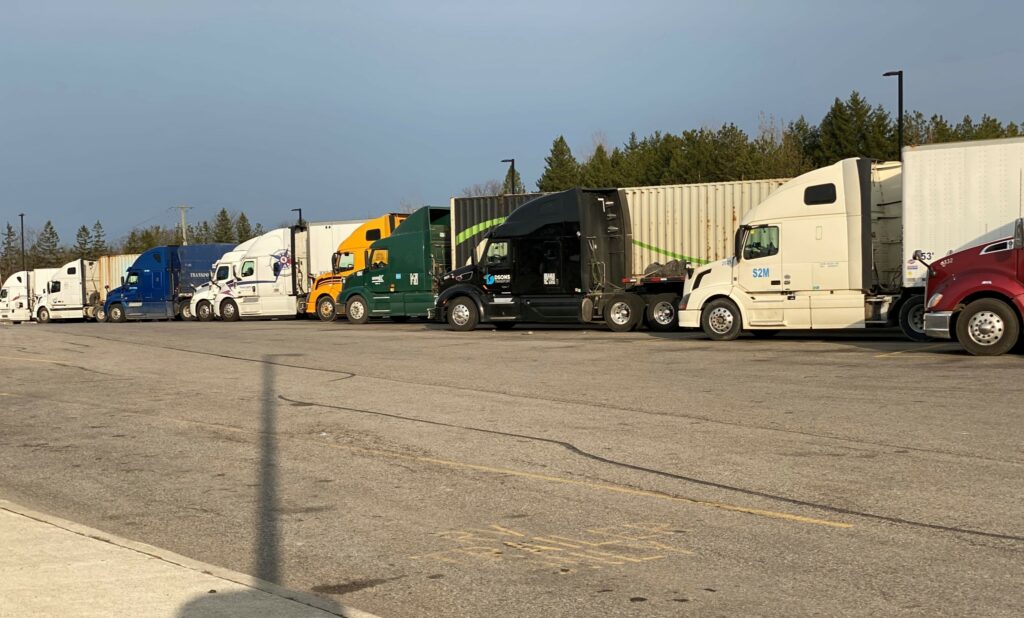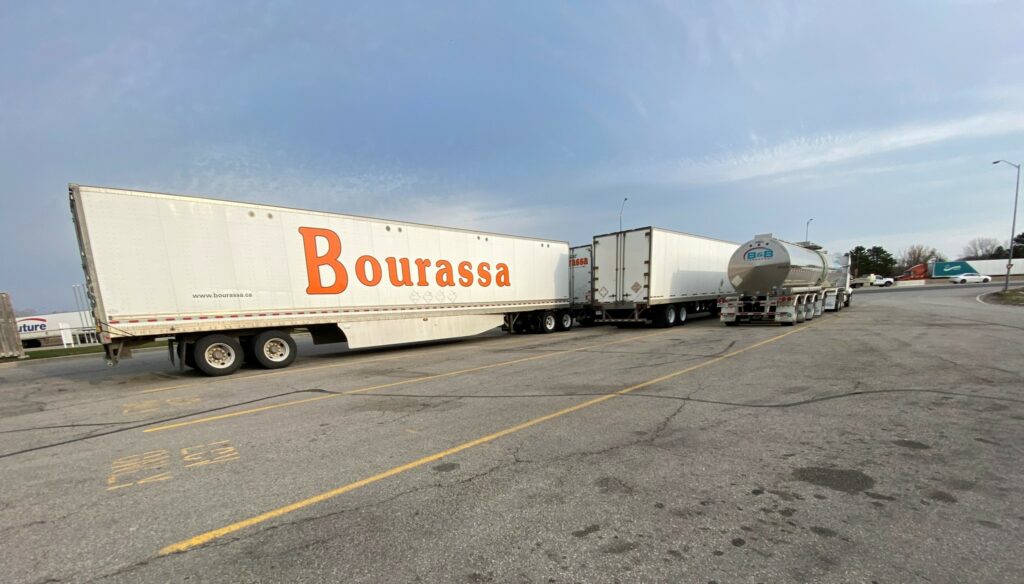Drivers continue to scramble for parking spots along the busy Hwy. 401 even as the Ontario government announced parking upgrades in several areas earlier this year.
In January, the province revealed truck parking upgrades in several areas, including improving existing rest areas, building new rest areas and adding scores of parking spaces at four existing ONroute travel plazas.
As spots at the few available truck stops and travel plazas quickly fill up every evening, veteran driver Paul McKechnie says truckers are sometimes forced to get creative in carving out parking spots as they run out of time on their electronic logs.
Parking lots at big box stores used to be an option for truckers, but many establishments have been putting up barricades and blocking trucks from using their properties. “Drivers are to blame,” says McKechnie, 70. “They dump their garbage and don’t clean up after themselves, no wonder store management doesn’t want them there.”
The infrastructure projects that extend into 2025 still fall far short of recommendations that emerged in SPR Associates’ 2019 southern Ontario parking study, Trucknews.com had reported earlier.
O.P.P. Sergeant Kerry Schmidt says the most common parking offences committed by commercial truck drivers are parking in no parking or no stopping zones.
There is no “silver bullet” solution to truck parking, says an official of the Ontario Trucking Association (OTA). Geoffrey Wood, senior vice-president, policy, says “It’s about adding pieces in different spots. The issue is not one and done. You cannot add parking at the flick of a switch. A lot of work has been done, and a lot of work is on the books.”
Owner-operator Ravish Garg says parking is always an issue. At some ONroutes, there is a lot of creative parking after designated spots fill up. “You have to figure out a way to get out if you enter the travel plaza as some drivers park wherever they feel like it.”
Some drivers use on- or off-ramps and the hard shoulder to park near truck stops or rest areas after spots fill up. These areas have ‘No Parking’ signs, and drivers could be charged with disobeying the posted signs, Sgt. Schmidt says.
McKechnie, who has been driving for 47 years, remembers an incident that happened years ago, when a driver parked his truck on the shoulder of the highway and was killed when another truck crashed into his vehicle.
Garg says he was once forced to spend the night parked on a ramp, and suffered a flat tire as two nails were embedded in it. A lot of debris collects at ramps he says, including nails and other sharp objects. The service call cost him $200, and an expensive lesson was learned.
The OTA says it has been working with the Ministry of Transportation in identifying parking needs. Wood says the response from the government has been overwhelming and cited the example of the recent announcement regarding truck parking improvements.

“Parking is an ongoing issue, but it’s one that we are addressing in a pretty aggressive fashion,” Wood says. The announcements address what is going to be done in the immediate future, the next two to three years, and significant amount of work is on the books for 2021-2022, he added.
Sgt. Schmidt says truck drivers need to plan their routes and their time. “When they run out of hours, they should be at a place where they can shut down and sleep for the required time,” he adds.
Driver McKechnie says if authorities want drivers to stop when they run out of hours, they should give them places to park. He used to drive long combination vehicles in the past and says in many places, the few spots reserved for them are taken up by tractor-trailers and sometimes even bobtails.

In Gananoque, Ont., an old inspection station is being converted into a rest area, the OTA’s Wood says, with 30 or 40 parking spots. The design is “cookie cutter” and is very transferable to other parts of the province because it does not take up a lot of space, he added.
Relief for drivers is coming soon, says Wood, with Southern Ontario looking at 200-250 additional parking spaces in the near future. “The main message is a lot of attention is being paid to this, we look at this as an ‘evergreen’ issue – it’s not one and done – we are constantly looking at it.”


